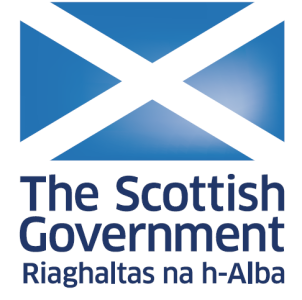Higher Education Staff Statistics: UK, 2022/23
This Statistical Bulletin includes: About this release | How many staff are there in HE? | What are the employment conditions of HE staff? | Who's working in HE? | Notes and definitions
Note: At the time of publication, two errors were identified in the staff bulletin 2022/23 commentary. The commentary on the 'Percentage of Professors' contained a typographical error, and the calculation for 'The Percentage of Female Professors' in the Contract Levels section was inaccurately displayed. These errors were corrected on Friday 2 February 2024. The interactive tables and downloads were unaffected by this issue.
About this release
This bulletin provides details of staff employment at UK higher education (HE) providers on 1 December 2022. Detailed analysis of the Jisc staff record will be available in the Higher Education Staff Open Data, due to be released on 30 January 2024.
From 2019/20, it is not mandatory for HE providers in England and Northern Ireland to return information about non-academic staff. Further details on coverage changes, including the number of providers opting out of submitting data relating to non-academic staff can be seen in the notes. We advise caution in interpreting this data.
How many staff are there in HE?
In 2022/23, 223 HE providers reported staff data to HESA. Of these providers, 216 were present in 2021/22 and 7 were new additions. Among them, one provider demerged into five independent bodies, and another one re-registered as a new entity. The three remaining additional providers were included after being added to the OfS Register in the Approved (fee cap) category during the reporting period. These three additional providers accounted for 35 academic staff (excluding atypical) in 2022/23. More information on data coverage is given in the notes section and the expandable box How are HE staff counted by HESA? below Figure 1.
On 1 December 2022:
- There were 240,420 academic staff (excluding atypical) employed in the HE sector, an increase of three percent from 234,020 on 1 December 2021.
- The number of academic staff (excluding atypical) employed on full-time contracts on 1 December 2022 increased by three percent relative to 1 December 2021. The number on part-time contracts have increased by two percent over the same time period.
- Numbers of academic staff (excluding atypical) with UK and non-EU nationality has increased compared to the previous year, while the number of EU nationals has declined.
Figure 1 - All staff (excluding non-academic atypical) by activity standard occupational classification
Academic years 2018/19 to 2022/23
Reset filters | Download table (csv) | Download source data (csv) | About SB267 Figure 1 | Notes
Higher Education Providers send data to HESA about all their staff who are employed under a contract of employment at any time during the academic year (1 August to 31 July). To prevent over-counting of staff resource HESA only publishes data about staff employed on an active contract on a single reference date of 1 December.
Exceptions to the 1 December census date rule include staff on atypical contracts, who are counted regardless of their start and finish dates. Atypical staff figures are always presented separately and should not be combined with non-atypical figures
Most counts of staff numbers are Full-Person Equivalent. This means that a staff member with more than one contract or activity is divided between those activities in the data tables. For example someone who works 3 days a week as a professor and 1 day a week as a gardener will be counted as 0.75 professors and 0.25 gardeners.
See the definitions for Coverage and Staff full-person equivalent for more detail.
The contract marker filter on Figure 1 provides an option to view data on the number of staff on academic atypical contracts. Please note that staff on atypical contracts form a separate population which is not comparable to those on other contract types (see the statement on the use of HESA staff data for more information). This bulletin does not include information on non-academic atypical contracts. Since 2015/16, atypical staff on non-academic contracts have been excluded from the coverage of the Staff record.
In 2022/23, 62,690 staff were employed by HE providers on academic atypical contracts. Atypical contracts meet one or more of the following conditions:
- Are for less than four consecutive weeks - meaning that no statement of terms and conditions needs to be issued.
- Are for one-off/short-term tasks - for example answering phones during clearing, staging an exhibition, organising a conference. There is no mutual obligation between the work provider and working person beyond the given period of work or project. In some cases, individuals will be paid a fixed fee for the piece of work unrelated to hours/time spent.
- Involve work away from the supervision of the normal work provider - but not as part of teaching company schemes or for teaching and research supervision associated with the provision of distance learning education.
- Involve a high degree of flexibility often in a contract to work as-and-when required - for example conference catering, student ambassadors, student demonstrators.
The total full-time equivalent (FTE) value of atypical staff in 2022/23 was 5,065. Further detail on staff FTE will be published on 30 January 2024 in our Higher Education Staff Data, 2022/23 open dataset.
What are the employment conditions of HE staff?
Source of basic salary
- Among academic staff, 191,795 or 80% had a basic salary that was financed entirely by the HE provider in 2022/23, reflecting the same percentage as observed in 2021/22.
- The remaining 20% had other sources of basic salary. Other sources can include being partly financed by the HE provider, financed by research councils, UK branches of multinational companies, the NHS and/or UK and overseas charities.
Academic employment function
- In 2022/23, 103,005 or 43% of academic staff were employed on contracts described as having a teaching and research function. The total for 2021/22 was 100,170 or 43%.
- A further 36% of academic staff were on teaching only contracts. This percentage has steadily increased year-on-year since 2015/16, when it was 26%.
- Over the same period, the proportion of academic staff with research in their contract has decreased year-on-year, from 73% in 2015/16 to 64% in 2022/23.
Contract levels
- Among academic staff, 24,430 or 10% were employed on a contract level described as a professor in 2022/23. It should be noted that this is likely to be an undercount of all professors because many will fall into more senior levels, i.e. Heads of Department.
- Of professors, 31% were female in 2022/23. The percentage of female professors increased by one percentage point since 2021/22, and by two percentage points since 2020/21.
- Academic staff employed on other senior academic contracts comprised 42% females in 2022/23. This has gradually increased from 33% in 2013/14.
Every contract is coded with a contract level. The professor level (F1) is defined as “senior academic appointments which may carry the title of professor but which do not have departmental line management responsibilities.”
Other senior contracts (codes A to E) include leadership and management responsibilities. These contracts may also be held by people who hold the professor title.
See the contract levels definition for more detail.
Terms of employment
- Among academic staff, 71,420, or 30% were employed on fixed-term contracts in 2022/23.
- Of full-time academic staff, 22% were employed on fixed-term contracts in 2022/23. In contrast, 43% of part-time academic staff were employed on fixed-term contracts, marking an eight percentage point decrease from 2021/22.
Figure 2 - Academic staff (excluding atypical) by employment conditions
Academic years 2018/19 to 2022/23
Reset filters | Download table (csv) | Download source data (csv) | About SB267 Figure 2
Figure 3 shows data about the number of staff on an hourly paid contract. This can be filtered by various data fields including zero hours contract.
- Among those on an academic contract, 37% of part-time staff were hourly paid compared with less than one percent of full-time staff, while nine percent of part-time non-academic staff reported to HESA were hourly paid compared with less than one percent of full-time staff.
- More staff on fixed-term contracts were hourly paid relative to open-ended/permanent contracts. This was true among academic staff and non-academic staff reported to HESA.
- There were 3,915 academic (excluding atypical) staff on a zero hours contract, of whom 93% were hourly paid. For non-academic staff, 84% of the 1,275 staff on a zero hours contract were hourly paid.
A zero hours contract is a contract between an employer and a worker where the employer is not obliged to provide any minimum working hours, and the worker is not obliged to accept any work offered.
Figure 3 - All staff (excluding atypical) by mode of employment and hourly paid marker
Academic years 2022/23
Reset filters | Download table (csv) | Download source data (csv) | About SB267 Figure 3 | Notes
Who's working in HE?
- Female staff accounted for 50% of full-time staff reported to HESA and 66% of part-time staff in 2022/23.
- In 2022/23, there were more male academic staff than female (123,290 and 116,540 respectively). Figures 2 and 3 show that 44% of full-time academic staff were female.
Figure 4 - All staff (excluding atypical) by mode of employment, contract marker and sex
Academic year 2022/23
 Academic marker Mode of employment
Academic marker Mode of employmentAge of staff
- In 2022/23, 8,275 or three percent academic staff were aged 25 and under. At the opposite end of the age groupings, 47,285 or 20% of academic staff were aged 56 and over.
- The percentage of professors aged 46-55 has seen an annual decrease of one percentage point since the academic year 2020/21.
- Almost half of professors were aged 56 and over.
Ethnicity of staff
- Of academic staff with known ethnicity, 22% were from ethnic minority backgrounds in 2022/23. This has increased from 16% in 2017/18.
- Of the 22,345 professors with known ethnicity, 2,865 or 13% were from ethnic minority backgrounds. The majority of professors from ethnic minority backgrounds were Asian.
- From 2021/22 to 2022/23 there was an increase of 40 Black professors.
Nationality of staff
- On 1 December 2022, among academic staff with known nationality, 37,585 or 16% were EU nationals, and 40,195 or 17% had a non-EU nationality.
Disability status of staff
- The number of staff known to have a disability increased by 1,100 compared to 2021/22 while staff from Scottish HE providers with known disability decreased by 845. More information on this can be found in the data intelligence.
Figure 5 - Academic staff (excluding atypical) by personal characteristics
Academic years 2018/19 to 2022/23
Notes
Who produced this Statistical Bulletin?
This bulletin has been produced by Jisc in collaboration with statisticians from the Department for Education, the Office for Students, the Welsh Government, the Scottish Government and the Department for the Economy Northern Ireland. It has been released according to the arrangements approved by the UK Statistics Authority.
HESA merged with Jisc in October 2022. Jisc was designated as a producer of official statistics in August 2023. Official and Accredited Official Statistics which are now published by Jisc will continue to be published under the HESA brand. The data collection activity which delivers the data to support production of official statistics also continues to be undertaken under the HESA brand.
What is the coverage of data in this release?
There are notable changes to the coverage of Staff data from 2019/20. Prior to 2019/20, the data covers all academic and non-academic staff from all publicly funded HE providers in the UK (and the University of Buckingham). From 2019/20 it became optional for providers in England and Northern Ireland to report data about staff on non-academic contracts (with the exception of any non-academic contracts held by vice-chancellors/heads of institutions or governors).
A further change in England from 2019/20 was the introduction of the Office for Students’ (OfS) Register and the two types of registration categories available to providers in England; Approved (fee cap) and Approved (further information relating to the OfS Register can be found in section III of the pdf document Securing student success: Regulatory framework for higher education in England [PDF]). Those registered in the Approved (fee cap) category are covered within the 2019/20 data presented, alongside all publicly funded HE providers in Wales, Scotland and Northern Ireland.
Of the 197 HE providers reporting staff data to HESA in 2019/20, 131 opted into returning data about all of their non-academic staff. The remaining 66 opted out and therefore only returned non-academic staff data pertaining to vice-chancellors/heads of institutions or governors. Due to this, we advise caution in interpreting this data.
Of the 213 HE providers reporting staff data to HESA in 2020/21, 130 opted into returning data about all of their non-academic staff. The remaining 83 opted out and therefore only returned non-academic staff data pertaining to vice-chancellors/heads of institutions or governors. Due to this, we advise caution in interpreting this data.
Of the 216 HE providers reporting staff data to HESA in 2021/22, 129 opted into returning data about all of their non-academic staff. The remaining 87 opted out and therefore only returned non-academic staff data pertaining to vice-chancellors/heads of institutions or governors. Due to this, we advise caution in interpreting this data.
Of the 223 HE providers reporting staff data to HESA in 2022/23, 126 opted into returning data about all of their non-academic staff. The remaining 97 opted out and therefore only returned non-academic staff data pertaining to vice-chancellors/heads of institutions or governors. Due to this, we advise caution in interpreting this data.
Has data for earlier years been revised?
This release uses revised data returns (the 'fixed' database) for time series figures. The fixed data return facility provides HE providers with the opportunity to make post-collection amendments to their HESA return. The fixed database is opened following the closure of the corresponding live data collection and usually becomes available for the first time at least 18 months after the original dataset is delivered. Please refer to the definitions below for detail as to which versions have been used to produce this release and the impact of these changes.
How to use the tables and charts
The tables and charts (labelled as figures) within this bulletin are interactive. There are options immediately above the figures to filter by data field(s) such as by sex or mode of employment. The figures refresh to display the option(s) chosen, updating the data accordingly.
In the figures, 0, 1, 2 are rounded to 0. All other numbers are rounded up or down to the nearest multiple of 5 in line with the HESA rounding strategy. Percentages are calculated on unrounded data and are rounded to the nearest whole number. This means percentages may not sum exactly to 100%.
It is a criminal offence under Section 171 of the Data Protection Act 2018 for a person knowingly or recklessly to re-identify information that is de-identified personal data without the consent of the controller responsible for de-identifying the personal data.
How can I get the data in a spreadsheet?
All the data is presented in interactive tables on the HESA website and will not be published in Excel spreadsheets. Below each table you will find a link to download the table as a *.csv.
If you are planning to open the *.csv files in Excel, you must ensure you import the *.csv data, rather than just opening the file directly. This will ensure the data is presented appropriately without corrupt characters appearing. We have published instructions on how to import *.csv files in earlier versions of Excel. If you are using Excel 2016, you should select 'Data' in the top ribbon and then choose 'From Text/csv'. In the options screen, select '65001: Unicode (UTF-8)' in the 'File Origin' box; click 'Edit' and ensure that all columns are formatted as 'Text'.
How to print this bulletin
This bulletin is designed primarily for on screen users. It can be printed by pressing Ctrl + P from within the release.
Definitions
The data presented in this bulletin is based on the 2022/23 HESA Staff record. The statistics in this bulletin are derived by Jisc from data collected from all HE providers in Wales, Scotland and Northern Ireland, and Approved (fee cap) providers in England.
Data was prepared in January 2024 using the following versions of the datasets:
- 2018/19 Original dataset, November 2019 version
- 2019/20 Original dataset, December 2020 version
- 2020/21 Original dataset, December 2021 version
- 2021/22 Fixed dataset, November 2023 version
- 2022/23 Original dataset, December 2023 version
Staff definitions
- Coverage
- Fixed database
- Full-person equivalent (FPE)
- Rounding strategy
- Academic employment function
- Academic employment marker
- Age
- Atypical staff
- Disability status
- Ethnicity
- Hourly paid marker
- Mode of employment
- Nationality
- Professorial status
- Sex
- SOC - Occupational coding for higher education staff
- Source of basic salary
- Terms of employment
- Zero hours contract
See data intelligence for specific notes about staff data in the first release.
Jisc cannot accept responsibility for any inferences or conclusions derived from the data by third parties.
Contact Us
Press enquiries should be directed to the Press Office at Jisc, 95 Promenade, Cheltenham, GL50 1HZ, +44 (0) 1242 388 513 (option 6), [email protected]. General enquiries about the data contained within this bulletin should be addressed to Luke Perrott, Official Statistics Manager, Jisc (at the same address), +44 (0) 1242 388 513 (option 2), [email protected].
Release date
16 January 2024, 9:30
Coverage
UK
Release frequency
Annual - view all releases (2008/09 - onwards)
Themes
Children, education and skills
Issued by
Jisc, 95 Promenade, Cheltenham, GL50 1HZ
Press enquiries
+44 (0) 1242 388 513 (option 6), [email protected]
Public enquiries
+44 (0) 1242 388 513 (option 2), [email protected]
Statistician
Luke Perrott
Pre-release access
View pre-release access list for this release





